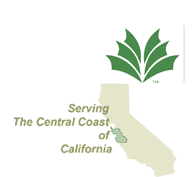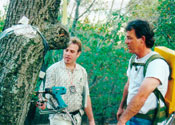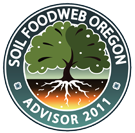Sudden Oak Death: Overview
Sudden Oak Death, Phytophthora ramorum, Phytophthora ramorum Blight
Tree Solutions arborists have been involved in the recognition and treatment of Sudden Oak Death (SOD) disease since the early period of discovery, 1995-1998. Early on, we offered our assistance to the research effort in order to obtain a thorough understanding of this disease. We have treated thousands of trees and continue our efforts to help preserve one of our precious resources.
Background
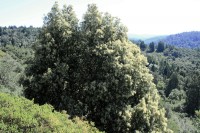 Sudden Oak Death mainly affects trees and shrubs along the Pacific coast beginning in central California from the Big Sur coast extending northward into Curry County in Oregon. Although the pathogen mainly exists in coastal areas, it also extends inland. The disease is present in other parts of the United States and Europe. Our focus is the California coastal areas from Monterey to Santa Clara counties. A comprehensive list of affected trees is available from the California Oak Mortality Task Force website.
Sudden Oak Death mainly affects trees and shrubs along the Pacific coast beginning in central California from the Big Sur coast extending northward into Curry County in Oregon. Although the pathogen mainly exists in coastal areas, it also extends inland. The disease is present in other parts of the United States and Europe. Our focus is the California coastal areas from Monterey to Santa Clara counties. A comprehensive list of affected trees is available from the California Oak Mortality Task Force website.
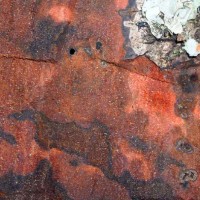 The tree disease known as Sudden Oak death was first reported by arborists in Marin County in 1995. At that time it was primarily observed in tanbark oak trees. A Phytophthora infection was suspected because of the characteristic pattern of discoloration in the bark and sapwood of infected trees. However laboratory tests obtained by the UC Cooperative Extension and other sources consistently came back negative for any known disease organism. The primary sign of the disease recognized at that time was a rapid wilting and browning of the foliage and death of the tree. Hence the name Sudden Oak Death or SOD.
The tree disease known as Sudden Oak death was first reported by arborists in Marin County in 1995. At that time it was primarily observed in tanbark oak trees. A Phytophthora infection was suspected because of the characteristic pattern of discoloration in the bark and sapwood of infected trees. However laboratory tests obtained by the UC Cooperative Extension and other sources consistently came back negative for any known disease organism. The primary sign of the disease recognized at that time was a rapid wilting and browning of the foliage and death of the tree. Hence the name Sudden Oak Death or SOD.
The phenomenon became known as “Sudden Oak Death Syndrome” because the affected trees showed signs of multiple associated disease and insect pest invasions. One of the principal factors in the rapid decline of affected trees was heavy infestation of oak bark beetles and/or ambrosia beetles; tiny borers that are known invaders of stressed oak trees. Because of the lack of definitive identification of a causal disease organism (pathogen) and because of the increasing association of beetle activity with SOD, emphasis on control during the late 1990s was focused on beetle control.
By 1998 and 1999, SOD in Coast Live Oak trees became prevalent and was reported in Sonoma, Santa Cruz, Monterey and other counties. The loss of live oaks became a much more serious event than the loss of the less-valued tanbark oaks.
SOD task forces were formed and serious research began. Finally in 2000, a UC forest pathologist, Dr. Matteo Garbelotto, implemented an advanced laboratory process. This resulted in the positive identification of the apparent causal pathogen for SOD as Phytophthora ramorum.
Many concerned arborists from several counties offered their assistance to the research teams. Tree Solutions president James Neve was involved in the early process of discovery and field work supporting research on SOD in the Santa Cruz County area.
Jim volunteered his arboricultural and pest control expertise for field work and assistance to the research teams by collecting samples and utilizing new injection technique with systemic fungicides; including potassium phosphonate, the treatment that would become the current standard for control of SOD.
Species of Phytophtora (Sudden Oak Death)
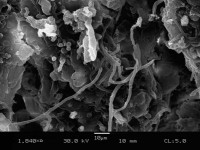 There are over 100 known species and mating types of Phytophthora to date. Phytophthora ramorum is the terrestrial form of the water mold pathogen. It is in the class of Oomycetes from the Kingdom Stramenopila. Literally translated from Greek origin; Phyto,-phyte (plant) and phthora (destruction) or “plant destroyer”. It thrives in cool moist environments.
There are over 100 known species and mating types of Phytophthora to date. Phytophthora ramorum is the terrestrial form of the water mold pathogen. It is in the class of Oomycetes from the Kingdom Stramenopila. Literally translated from Greek origin; Phyto,-phyte (plant) and phthora (destruction) or “plant destroyer”. It thrives in cool moist environments.
Most of us were first introduced to this pathogen through history recollections specific to the Irish Potato Famine. The pathogen Phytophthora infestans is responsible for the death and migration of thousands of Irish citizens when it destroyed a large percentage of their staple food source, the potato.
The pathogen destroys the plant growing tissue called cambium as well as the vascular system phloem and xylem cells which are responsible for tree life. The presence of the pathogen in this tissue causes girdling, which eventually leads to blight.
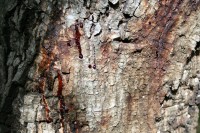 Reddish brown sap oozing from the tree trunk is a wound response to the pathogen. It usually takes the form of droplets. It is one of the visual diagnostic indicators of disease presence. A thorough site and tree examination and assessment as well as an experienced understanding of the disease complex is very important for diagnosis. Noting that several other pathogens produce similar bleeding symptoms.
Reddish brown sap oozing from the tree trunk is a wound response to the pathogen. It usually takes the form of droplets. It is one of the visual diagnostic indicators of disease presence. A thorough site and tree examination and assessment as well as an experienced understanding of the disease complex is very important for diagnosis. Noting that several other pathogens produce similar bleeding symptoms.
Removing the bark over an infection area reveals dark zonal lines and diseased tissue within the zonal borders.
An oak may be infected up to one year or more before symptoms appear. In our experience, once a bleeding lesion appears, tree mortality of coast live oaks can follow approximately two years thereafter. We have also experienced trees infected by Phytophthora ramorum and ambrosia beetles to the point of girdling (damage to a tree’s vascular system) over 50% of a tree circumference that stay green and healthy appearing after four years of treatment.This in-field observation proves that there are no hard and fast rules as a whole. Instead, we need to look at each and every tree individually.
Diagnosis and Management of Phytophthora Diseases
Diagnosing a Phytophthora Problem
Certain lines of evidence can quickly lead you toward (or away from) a Phytophthora disease diagnosis. The evidence is in the field characteristics, field history, and symptoms of the affected plants. more
Beetles
 Bark beetles are attracted to diseased or stressed trees. It is their job in the forest to seek and destroy these trees. It is said that weakened trees emit a chemical, signaling stress, thus attracting the beetles. Beetles are attracted to the canker area. Just like the pathogen, these beetles girdle infected trees. However, they girdle at a much faster rate than the pathogen. If one is trying to preserve and protect a tree, it is important to protect from beetle attack as well as the pathogen itself.
Bark beetles are attracted to diseased or stressed trees. It is their job in the forest to seek and destroy these trees. It is said that weakened trees emit a chemical, signaling stress, thus attracting the beetles. Beetles are attracted to the canker area. Just like the pathogen, these beetles girdle infected trees. However, they girdle at a much faster rate than the pathogen. If one is trying to preserve and protect a tree, it is important to protect from beetle attack as well as the pathogen itself.
Sawdust material (frass) is produced by one of three possible beetle species. Red frass is from the western oak bark beetle (Pseudopityophthorus pubipennis), and white frass is produced by ambrosia beetles (Monarthrum dentiger and M. scutellare).
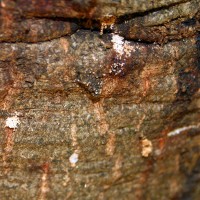 Beetles can attack before Sudden Oak Death signs are present, so it is important to look for these pests during regular scheduled inspections.
Beetles can attack before Sudden Oak Death signs are present, so it is important to look for these pests during regular scheduled inspections.
The combination of Potassium Phosphonate and a surfactant which is sprayed onto the trunk as a drench, or P. Phosphonate alone injected into the tree vascular system was approved for treatment in October of 2003. It is the only approved treatment to date. It is not a cure and it is best to treat trees before infection occurs. The material has both an indirect and direct effect on the pathogen. It primarily helps a tree to boost its defense system which helps fight off infection.
